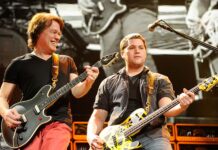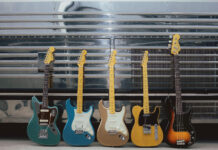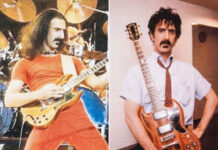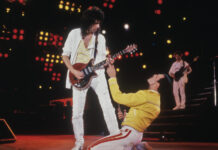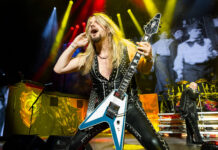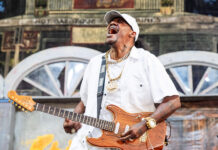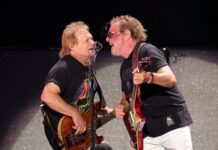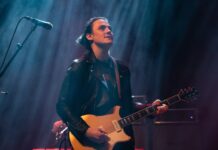
The guitar influences of Kurt Cobain
Influences are incredibly important when it comes to musicians developing their own style. Some musicians can become the sum of their influences, while others will find their own voice after being inspired by the artists who came before them – Kurt Cobain is the latter. His brilliant songwriting was highlighted by the way he used his instrument. His goal was never to be flashy or impress anyone with his sweep picking – it was to accentuate the artistic statement he was trying to make, and he was unquestionably successful in his endeavor.
READ MORE: The Gear Used on Nirvana’s MTV Unplugged in New York album
Nevertheless, we can learn a lot by examining the guitarists who influenced the way that Cobain played, both sonically and technically. So, in this article, we’ll take a look at some of the guitarists whose playing helped guide Kurt Cobain to be the musician we all know him as today.
Buzz Osborne
Kurt Cobain frequently acknowledged Buzz Osborne as a mentor and an influence. Their music-centric kinship was a much more personal influence on Cobain’s guitar playing than simply admiring the handiwork of Jimmy Page. Osborne was a local person with whom Cobain could actually talk about his musical ideas. Osborne was an important figure in Cobain’s music journey – a Samwise to his Frodo, if you’ll indulge that overly nerdy metaphor.
Lead Belly
In 1989, while Kurt Cobain and Mark Lanegan were busy establishing their own bands, they got together to record a series of Lead Belly cover songs for a tribute project they were going to call The Jury. Lead Belly was an early blues musician that Cobain has expressed a lot of admiration for – Bob Dylan also credited Lead Belly for getting him interested in folk music.
Cobain and Lanegan’s version of Where Did You Sleep Last Night ended up being the final track on Nirvana’s Unplugged performance and Mark Lanegan put a version on one of his solo albums. Cobain’s main acoustic used on songs like Polly and Something in the Way was a 12-string Stella, which was likely a tribute to his hero Lead Belly.
John Lennon
It’s probably fair to say that everyone has been influenced by The Beatles or a derivative in one way or another. The Beatles were such a cultural force that it’s hard to ignore them completely if you are a musician. Cobain specifically found John Lennon to be an inspiration. In a 1992 interview with The Advocate, Cobain said, “John Lennon is definitely my favorite Beatle…I just like his attitude. He’s not a great musician, but he’s a great songwriter.”
It was evident that Cobain looked to Lennon, not for his technique or tone, but for more of an overarching blueprint for how to approach the guitar, as simply a tool for writing great songs. As we know, Cobain steered well clear of flashy playing, which helped to shift focus to the songwriting. This was a similar tactic to how John Lennon operated in The Beatles.
Greg Sage
Kurt Cobain has publicly commented on his love for the band Wipers, particularly the songwriting and playing style of guitarist and vocalist, Greg Sage. Wipers were an early punk band who started back in 1977 in Portland, Oregon. Nirvana covered Wipers songs like D-7 and Return of the Rat, on early albums. Furthermore, Sage was a left handed guitarist. I’m not sure if that had anything to do with Cobain being drawn to him. It seems more likely that Cobain loved punk rock and Wipers, while not widely known, were very popular in the early Northwest punk scene.
Warren Mason
This is a name you may not recognize as he was another local person in Cobain’s early musical development. Warren Mason was a guitar teacher who gave a young Cobain guitar lessons for a few months while Cobain was in high school. Cobain’s family eventually pulled him out of the lessons due to poor performance in school. Mason passed away in 2021 but was remembered as a supportive teacher who encouraged creativity. He has said in interviews that Cobain wanted to learn to play Stairway To Heaven. Krist Novoselic also took lessons from Mason. Mason was in a couple of local bands, one was called Fat Chance, which featured Cobain’s uncle on drums. I won’t claim that Mason was a profound influence on what would come to be Cobain’s signature sound, but he was elemental in providing the basis for him learning to play guitar. Guitar instructors are far too often the unsung heroes of the music industry.
Joey Santiago & Black Francis
It’s no secret that Nirvana was heavily influenced by the Pixies, Kurt Cobain even going so far as to say in a January 1994 interview with Rolling Stone, “[With Smells Like Teen Spirit] I was trying to write the ultimate pop song. I was basically trying to rip off the Pixies. I have to admit it [smiles]. When I heard the Pixies for the first time, I connected with that band so heavily I should have been in that band—or at least in a Pixies cover band. We used their sense of dynamics, being soft and quiet and then loud and hard.”
Joey Santiago’s unconventional guitar solos seemed to resonate with Cobain as well as he would often use the space in a song where usually there would be a solo to make a statement with his note choices rather than show off some fancy shred technique he’d been working on.
The Pixies also had an influence on Nirvana’s production, citing Surfer Rosa as one of the main reasons they approached Steve Albini to produce their final studio album In Utero, in 1993.
This is by no means meant to be a comprehensive list. I tried to stick to artists that Cobain directly referenced in interviews for the purposes of this article. But Cobain was heavily influenced by such a wide array of music – he allowed himself to be inspired by everyone from Flipper and Black Flag to ABBA and Jimmy Page. If there is a lesson to be learned from exploring Cobain’s musical roots, perhaps it’s that – explore all the music you can and allow yourself to be inspired
The post The guitar influences of Kurt Cobain appeared first on Guitar.com | All Things Guitar.
Source: www.guitar-bass.net

